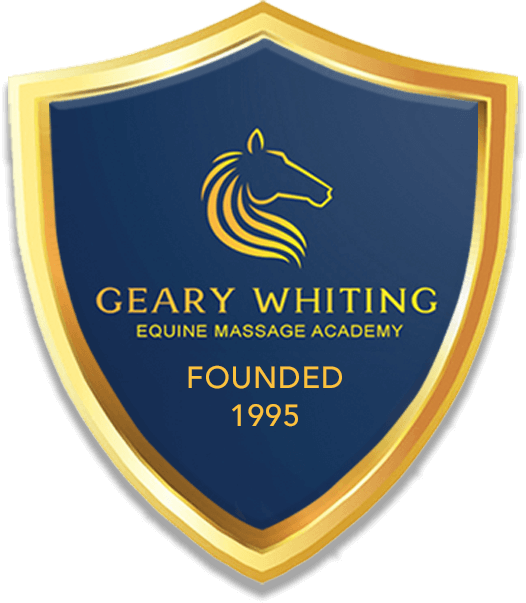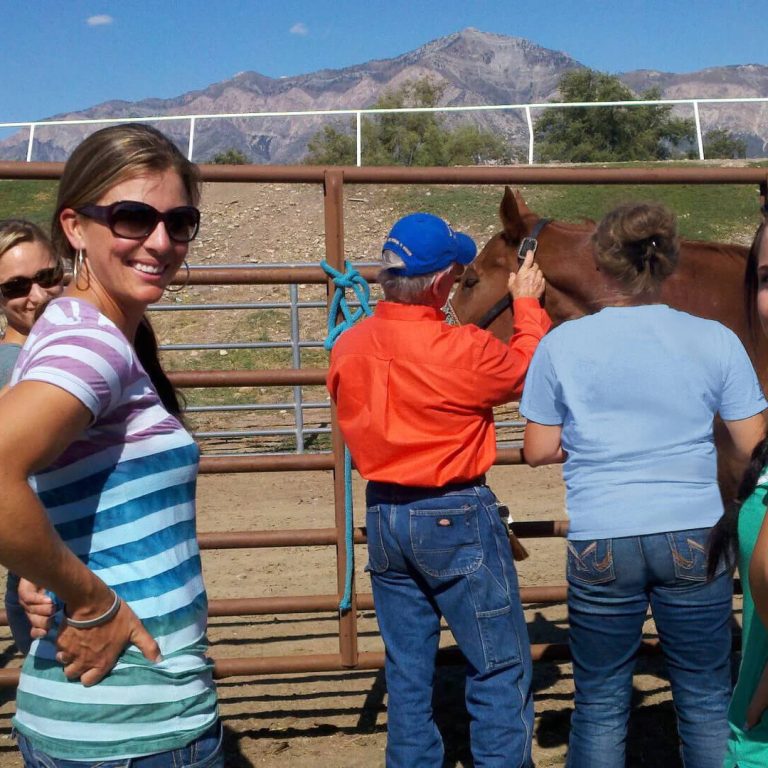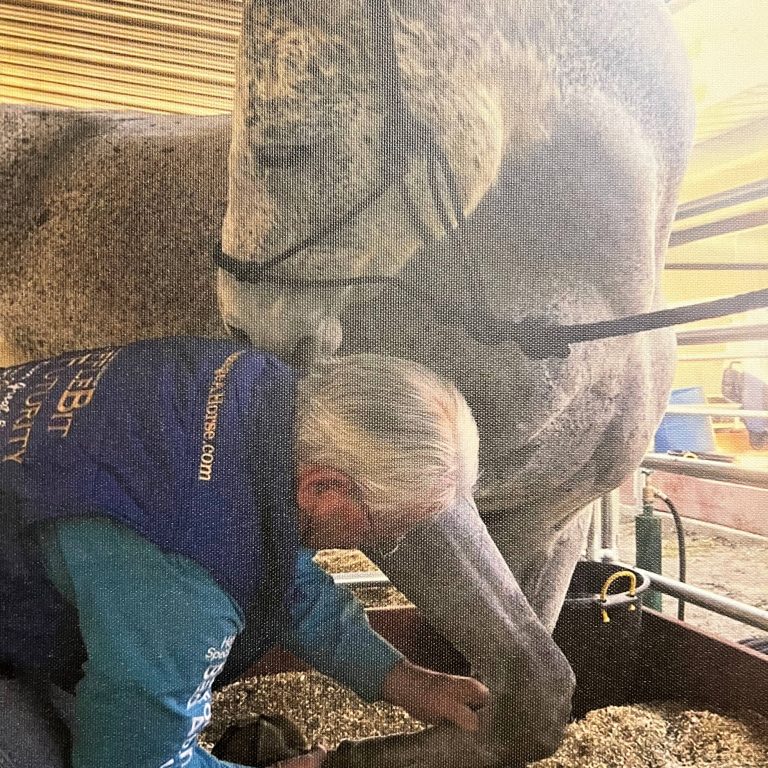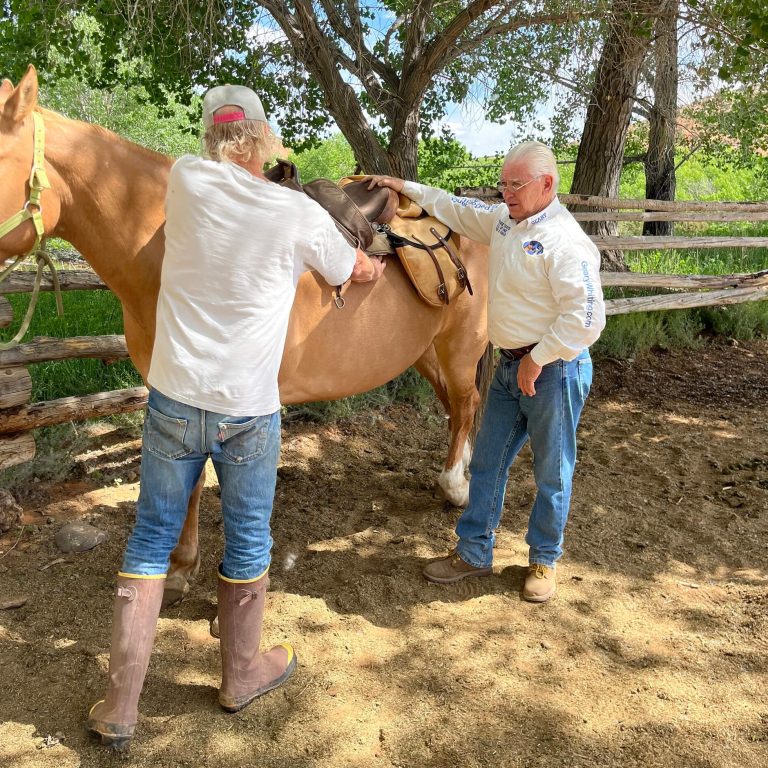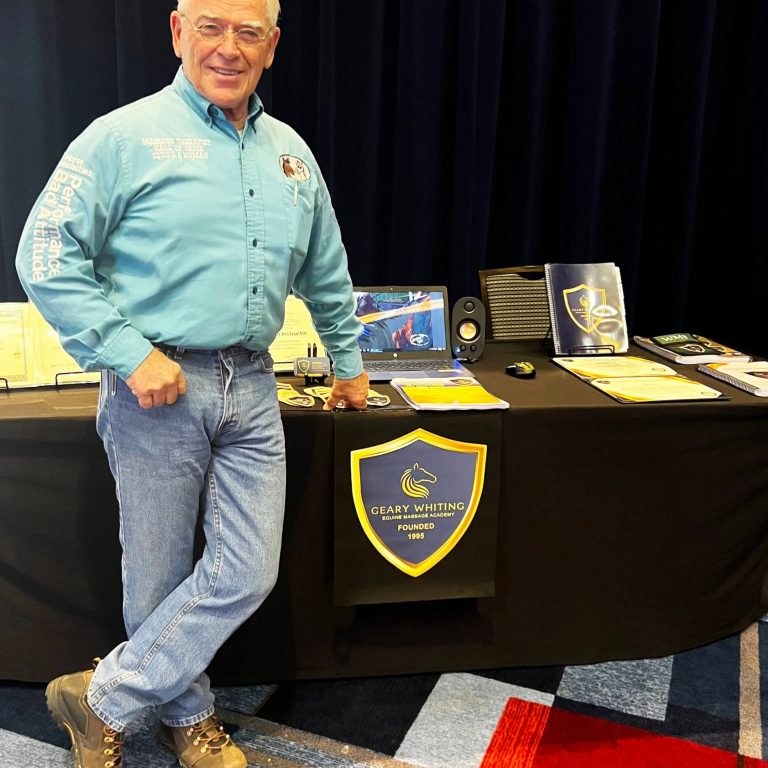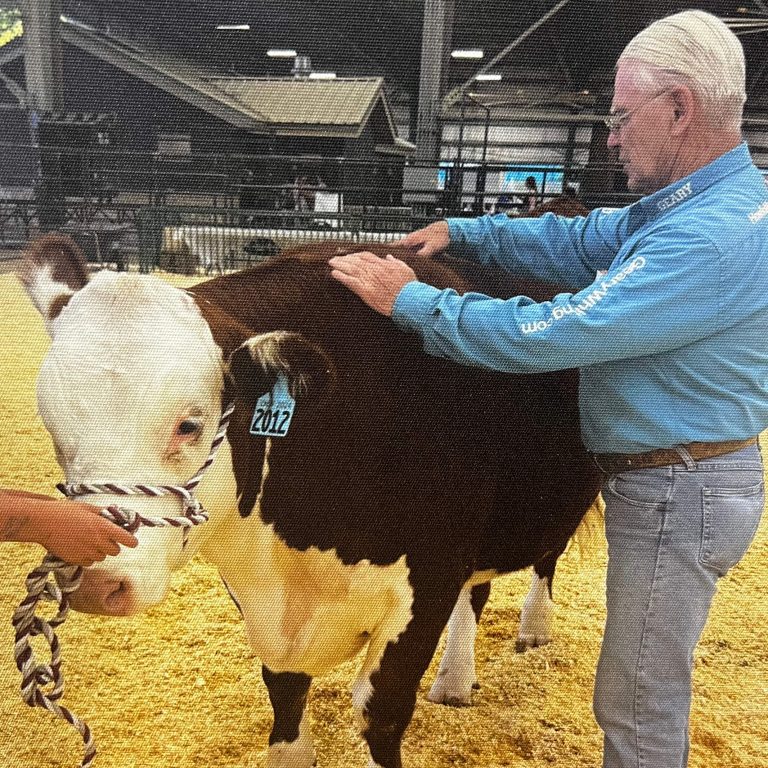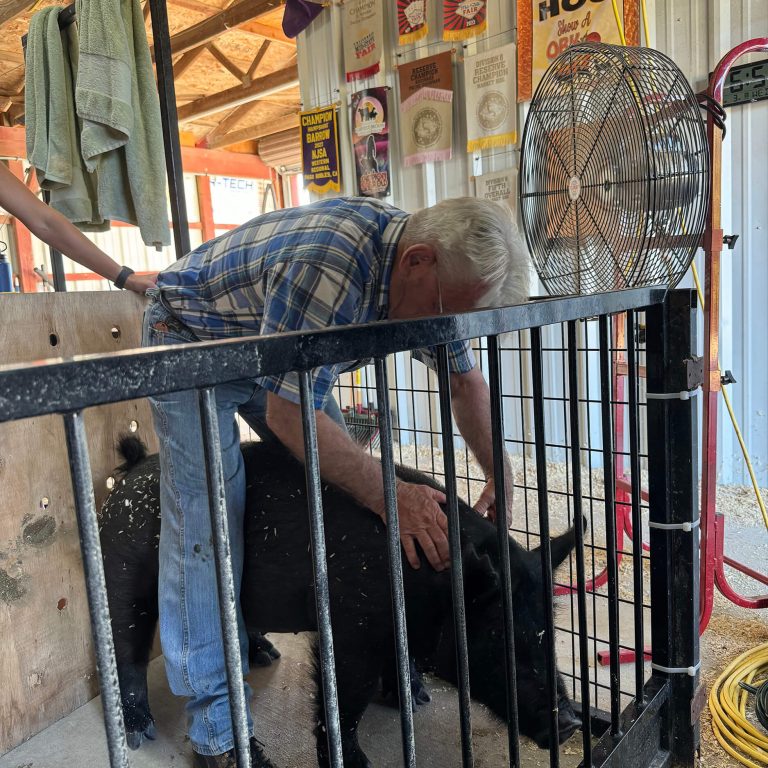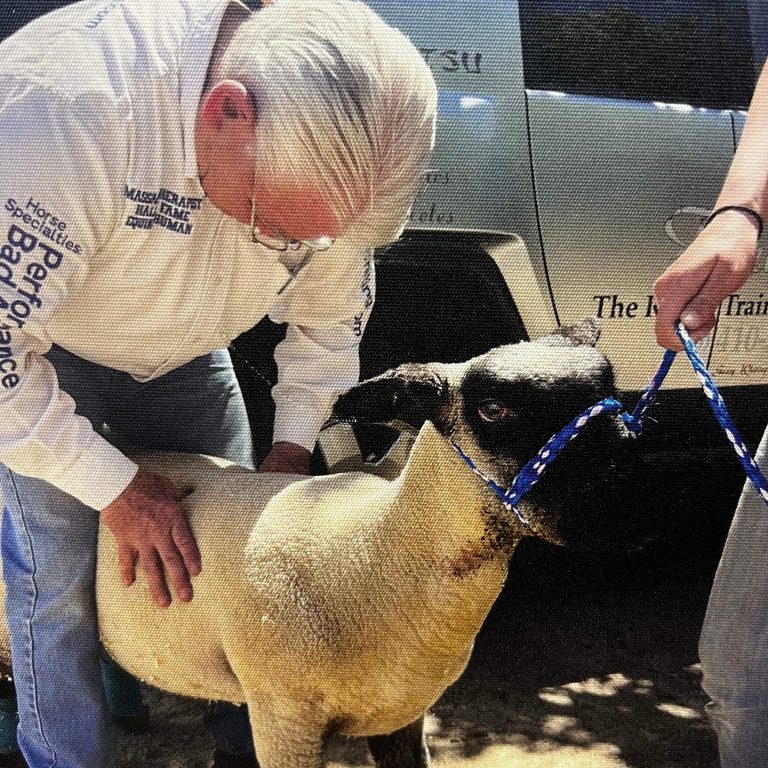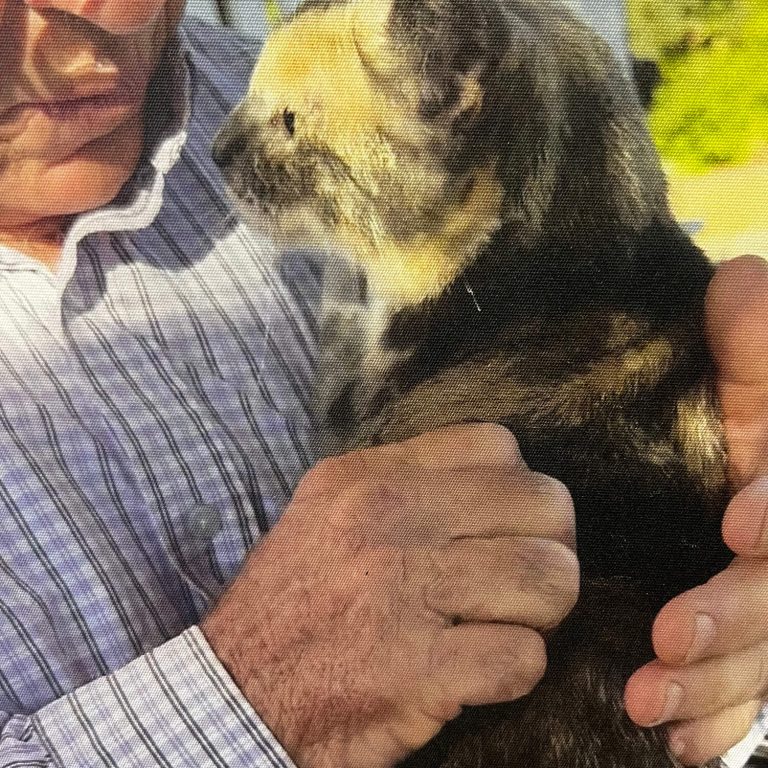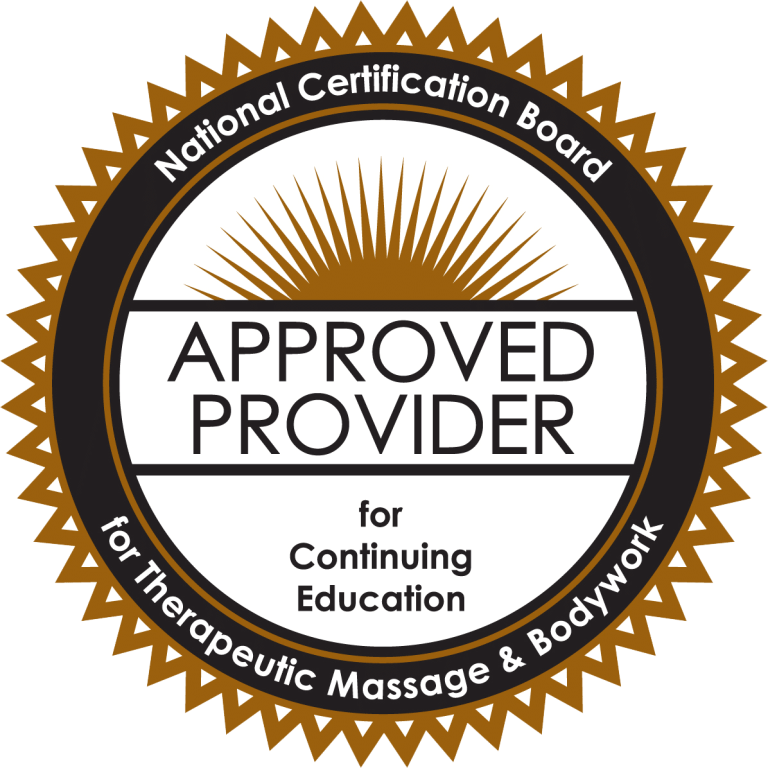Equine Massage Academy
The only NCBTMB Nationally Approved Horse and Rider Equine Massage Academy in the United States!
WELCOME TO MY ACADEMY! In my 44 years of applying different massage techniques, I have recognized none compare to the Japanese art of SHIATSU for ultimate athletic performance and relaxation. My pioneered style of teaching is unique and so is my subject matter — for both horses AND riders. Again…WELCOME.
Lifetime Achievements
1963 started my journey as a personal trainer, 1982, Touch for Health instructor, 1985 Certified Personal Trainer, 1986 graduate of Shiatsu massage school of Southern California, (1989 Massage Magazine cover story,) 1998 Founded and pioneered the equine massage industry with Geary Whiting Equine massage school, 2003 Honorary degree of Doctorate in Original research in Holistic studies, 2003 received The Outstanding Achievement Award in oriental medicine, 2015 Inducted into Hall of Fame at The World Massage Festival, and received The Pioneer of Massage award, 2023 established Geary Whiting Academy for Horse and Rider.
Real Life Results From Geary Whiting's Academy!
Thanks to Geary Whiting’s Equine Massage Therapy!
This is a true testimonial about a horse we saved from an early painful death.
Earlier this year we were given Billy because his owners couldn’t afford the care that he needed. He could not stand without being in extreme pain, he moved slowly, and limped painfully. He was unable to put weight on his hooves, causing all his muscles to be tight and tense. Billy was dehydrated and smelled of death, due to kidney and liver failure (as we later found out). With doubts of him surviving the trailer ride home, we made our journey and arrived safely to our door. We immediately changed Billy’s diet and had him to the first vet within four days. He told us to keep him drugged with “bute” and let him out to pasture to pass on.
Geary Whiting presented us with the opportunity to use Billy as a demo horse for his first massage course in our area. Billy was taken to the school the day before class unable to walk very well, head hanging low and in obvious pain from various ailments (including, but not limited to, severe ringbone, arthritis in the knee, severely underweight, and unable to urinate). The students were not sure if he would make it to the stall twenty feet away, and nicknamed him “Mr. Dead”.
Billy was worked on throughout the week and when we went to pick him up (expecting maybe a horse made more comfortable, but still in pain) we were greeted with a clean smelling, alive-looking animal, that was being ridden up hills and wanting to gallop because he could. The results were unbelievable! Here was a horse that only a week earlier was expected to die, who was now acting like a 10-year-old ready to go instead of 25 and out to pasture.
Due to the results of Billy’s recovery I (Kelli) enrolled in Geary’s course so that I could learn exactly what happened to bring a horse back from the dead. I was surprised at the simplicity of it all. I found the class to be informative, enjoyable, and easy to absorb. Geary’s course offered everything that is needed to provide health and well being to animals, along with how to start your own practice while keeping a healthy mind and body through his workout program. My husband and I highly recommend Geary’s course for both horse and rider.
P.S. Billy, now known as “Wild Bill”, continues to thrive and is a lesson horse for beginners; he has found his niche and loves looking after his riders.
Yours in Good Health,
Thomas M. Klassy D.C.
Kelli M. Klassy C.M.T., E.M.T., C.E.S.M.T.
Standing Tree Ranch
Billy is a 25-year-old thoroughbred who looked like he should be sold for dog food.
He arrived at the massage school underweight and in poor condition. He barely made it from the trailer to his stall – 20 feet away. Billy was lethargic and would not raise his head when anyone entered his stall. He was mostly skin and bones. He would barely eat. We called him “Mr. Dead”. Over the course of a week Billy received several massages to look at us as we entered his stall – 20 feet away. Billy was lethargic and would not raise his head when anyone entered his stall. He was mostly skin and bones. He would barely eat. We called him “Mr. Dead”.
Over the course of a week Billy received several massages. Monday evening Billy started eating more. Tuesday he turned to look at us as we entered his stall. Wednesday he nickered at us as we came to feed him and he ate everything in sight. Wednesday afternoon he walked around with a rider on his back. By Thursday he was trotting and Friday morning he cantered up a hill with a rider. We call him “Wild Bill”.
Just as amazing was that these massages were performed by students! Geary makes learning so fun and easy that anyone can do it and achieve remarkable results. Classes are small and interactive in a comfortable setting (they were held around the dining room table). Geary provided us with an education that went far beyond the advertised 60 hours.
Sincerely,
Jody Hutchison
Horse Trainer and Graduate of Geary Whiting’s Equine Massage School
To Whom It May Concern:
Over the years of my athletic career I have worked with many Massage Therapists and none were in the league with Geary Whiting. As much as I appreciated their work, I will not mention them in the same sentence with Mr. Whiting. He “stands alone” when it comes to getting results.
It is my pleasure to introduce Mr. Whiting to you, of whom I greatly respect and endorse.
Besides being a very competent athlete himself, Geary has gone on to do in-depth study’s in the different massage arts. This combination has not only given him a thorough understanding and knowledge of what makes the human body work, but also a direct analysis of what needs to be done to maximize the body’s performance whether athletic or otherwise.
This is why I have selected Geary to help coordinate some of my training and handle all of my performance massages which includes;
- Shiatzu
- Deep tissue
- Sports
- Swedish
Because of Geary’s expertise it is mandatory that I have him accompany me during my race events and my training required for these events. One such event was the New York City Marathon. Geary worked on me continually during the twenty-six point two miles. He was able to lower my 1987 New York City Marathon time by more than 17 hours. Due to Geary’s efforts in maximizing my bodies performance, I feel he was a main factor in my being nominated as Athlete of the Year for 1988.
Geary has another valuable quality worth mentioning, his unique ability to sense the needs of his clients. His sensitivity and concern for others makes him the professional he is today, and explains the results he achieves.
I consider it an honor and a privilege to introduce to you, Geary Whiting, of whom I give my endorsement.
Sincerely,
Bob Wieland
World Champion
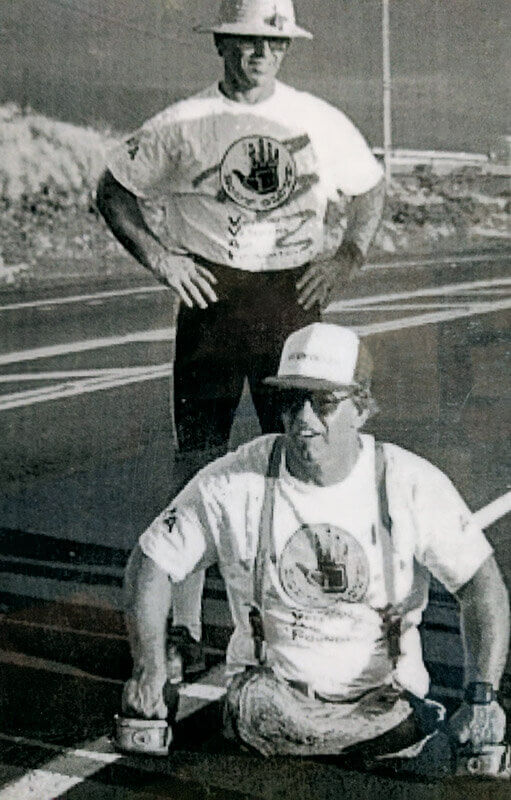
Finally Charley's Moment
I just have to write this note I hope you’ll share with your future students. As you know, I came to your school just so I could help my own horse when I became dissatisfied with the therapist who had been working on him. Little did I know what was to come!
What you teach at your school, your massage technique is powerful stuff! I mentioned that I was going to your school to my chiropractor, who, unbeknown to me then, is an owner of some racehorses. He said he would love to try it out on his horses. So I want to share with you, that just 3 weeks home from school and I was at Hollywood Park race track massaging racehorses. I must say the trainer seemed captivated with the first horse’s demeanor during the massage. The second one I did, he said he couldn’t believe it was the same horse and that he’d never seen him that calm before.
And of course, the faces the horses made was a “telltale” sign as well that they did indeed love every minute of it! While I was “working,” I also overheard the trainer tell the owner that he was very impressed at how thorough the massage was. Saying that over the years he had seen many people come in and do massages and that “they all seemed to be in a hurry, and the horses never relaxed like this!” He had not seen anybody take the time that I did and just marveled at how much the horses enjoyed it. The horses trained the next day and it went so well (his words: “he was just gliding down the track!”) they had me at Del Mar the next Saturday massaging for Sundays’ big stakes race. (I’m not giving the names of the horses or trainers as to not reveal their secret weapon – ME!!! Thanks to you!) And they did very well too!
What a thrill it has been for me, to have the opportunity to work on these amazing horses, to have played a part in their enhanced performance, and to get behind the scenes at the races. And, I am confident that if I was just another massage therapist doing “fluffy stuff,” they surely would not have asked me back.
And it just goes on! Sharing this story with a few friends has resulted in appointments for more massages and I’ve been asked to do a clinic at a local facility that has approximately 160 horses boarded there!
So to future students, what you have the opportunity to learn is an amazing and powerful tool that not only can enrich the lives of the horses you work on but your own life as well.
And to you, fine teacher, I will always be grateful that God put that love in your heart for what you are doing, it shines through and through. I am so glad to choose your school.
Sincerely,
Berta Delight Pinon, CESMT
B Delight’d Equine Massage
UPDATE
On Feb 7, 2009, they entered Charlie’s Moment in a $200,000 Stakes Race at Santa Anita and had asked me to work on him the morning of the race. Security is very strict before a Stakes Race and you must be licensed by the Racing Board to get near the horse. So, unfortunately, I was not allowed to touch him, as I had not received my license yet. In any case, Charlie finished last that day.
May 24, 2009, Charlie was entered in a $100,000 Stakes Race at Hollywood Park. One of the owners expressed concern because this was a 7 Furlong race against some pretty tough opponents, and Charlie simply had not made a showing in the shorter distances. I made them an offer, “let me massage Charlie a week before the race and again the day before the race and if he doesn’t finish in the money, I won’t charge you.” They agreed! Charlie took the lead before the first turn and never let another catch him! He won by two lengths!! It was very impressive, to say the least! As a matter of fact so impressive, he was purchased right after the race by a Sheikh and shipped to Dubai! I later found out it was Godolphin Racing that purchased him. Their founder (Drum Roll Please!) is Prime Minister and Ruler of Dubai H.H. Mohammed bin Rashid Al Maktoum. Incredible! I’m having the time of my life out here, and still very impressed by the power of this massage technique!
Most Sincerely,
Berta
Need More Reasons to Choose Geary Whiting's Academy?
-
Emphasis on TEAM CONCEPT: addressing the needs of both horse and rider.
-
An amazing learning experience at our IN-PERSON ACADEMY in Paso Robles, California.
-
ACADEMY vs SCHOOL…a school teaches skills, but an academy transforms lives.
-
Graduates will possess all the tools necessary to launch their own equine massage business.
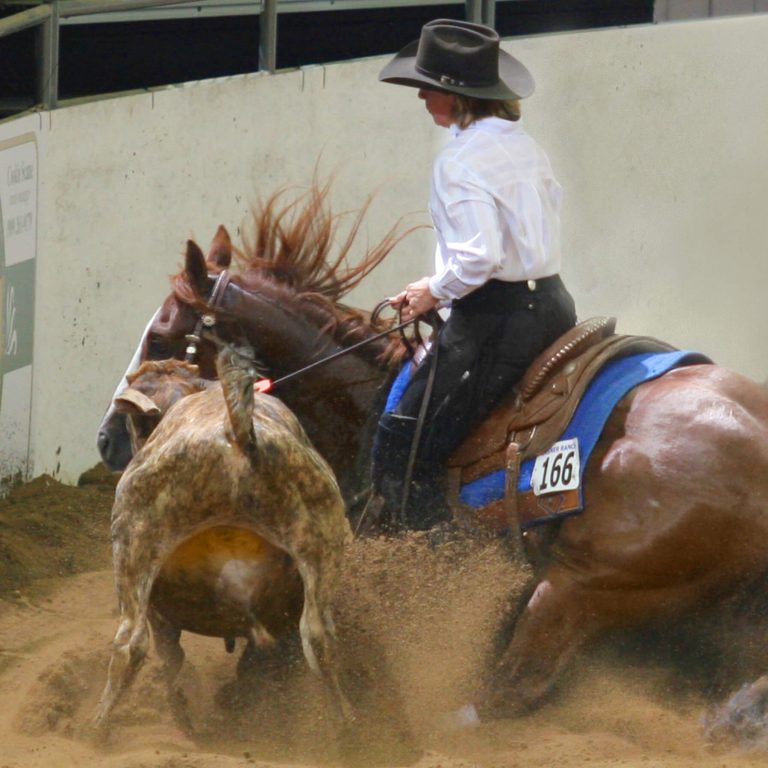
“I have seen an increase in my strength and mobility as a professional athlete. My body and my horses say thank you to Geary!
If you are serious about your education in the world of performance horses, Geary is the best in the business!!”
Sandy Collier, NRCHA Hall of Fame Inductee
Take the next step towards helping horses and yourself, and earn a certification in the equine massage field while you’re at it!
Tucked away in Paso Robles’ picturesque wine country, Geary Whiting’s Equine Massage Academy provides a cozy, hometown vibe for an engaging and transformative learning journey.
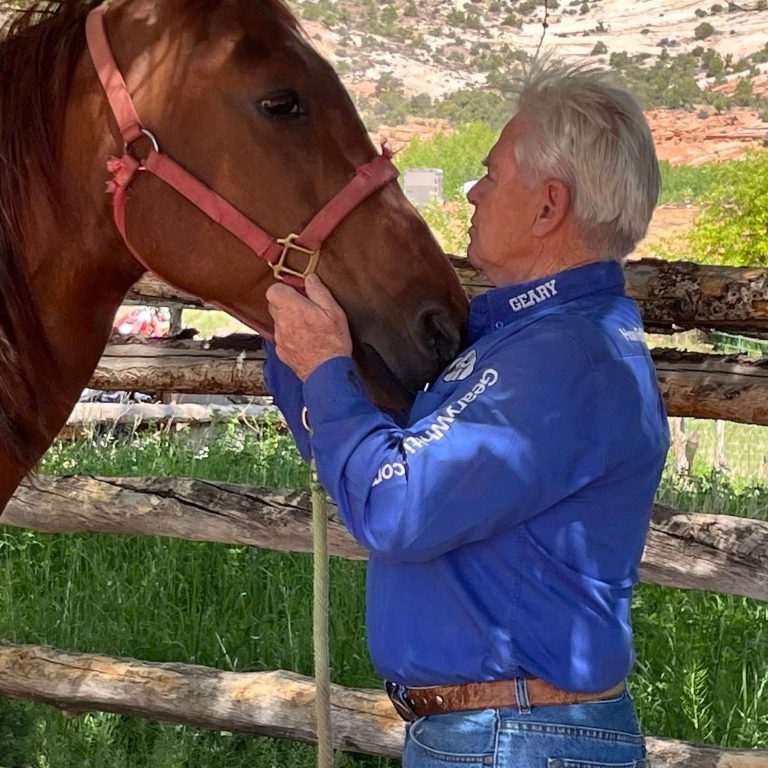
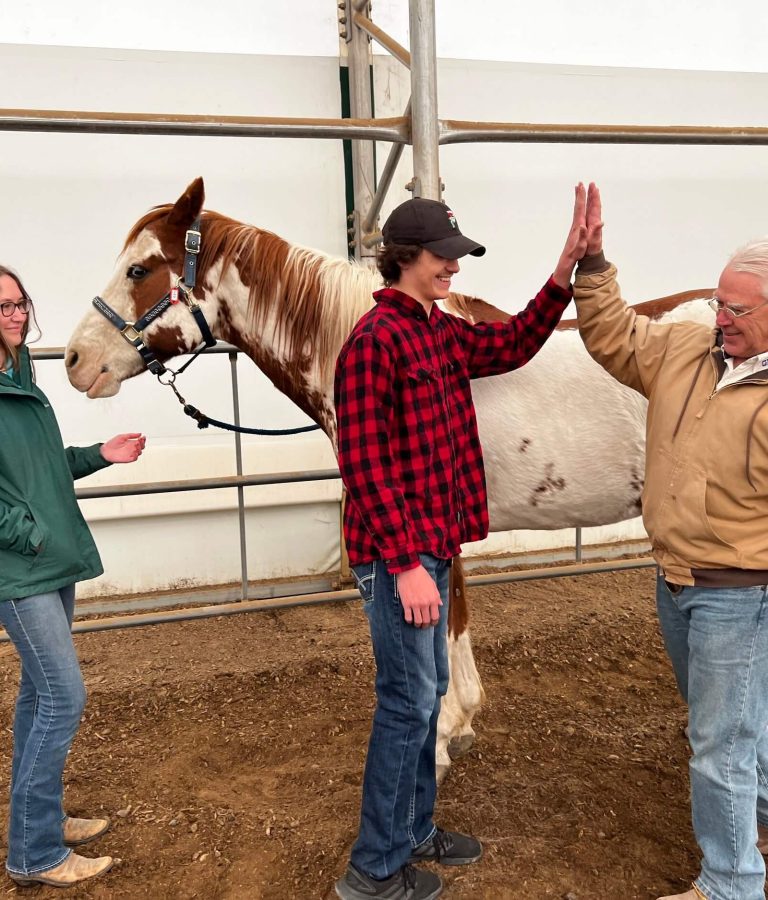
Academy vs. School
Geary Whiting’s Equine Massage Academy transforms lives through comprehensive, immersive education. Our academy stands alone as the only program in the U.S. dedicated to both horse and rider, blending over 40 years of expertise in shiatsu massage, fitness, and nutrition. Unlike basic schools, this academy delivers a holistic curriculum, hands-on training, and personalized mentorship in an inspiring environment.
Graduates emerge empowered to enhance equine performance and build thriving careers, making Geary’s academy the definitive choice.
Graduate Success
Graduated students from our equine massage program are often eager to share the wonderful successes they have on their own! Click below to read some graduate letters.
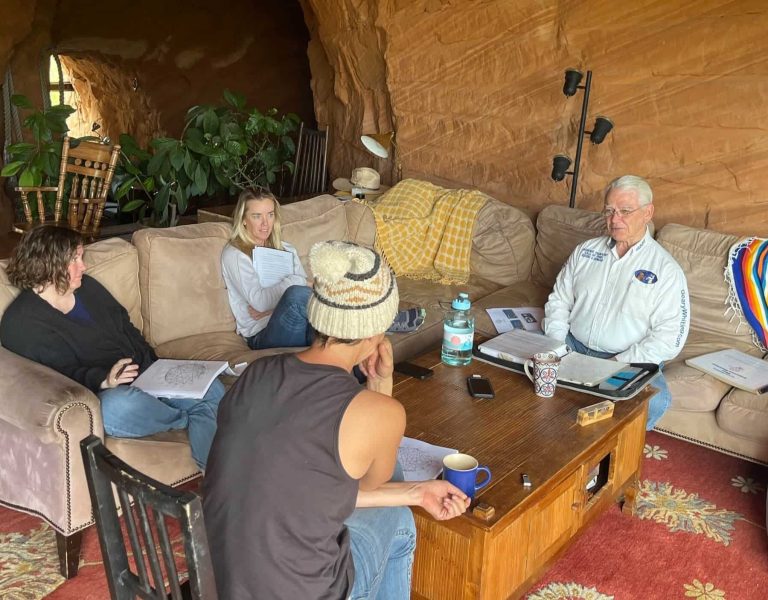
Comprehensive Services by Geary Whiting
The Academy
Equine Massage Academy
In-person, online, and hometown academy options for an inspiring learning experience to fit your needs.
Schedule Massage
Equine & Animal Massage
Make an appointment today and help your horse (or other animal) achieve peak performance!
Book a Clinic
Sharing Knowledge
Half-day or full-day equine clinics tailored to suit the education that you are looking for!
Teaching Engagements
Teaching Life Lessons
Equine care, human and horse fitness and nutrition, and what it means to be a man in today’s world.
A Program that Will Change Your Relationship with Horses
Geary Whiting’s Equine Massage Academy offers more than just learning to massage horses—it completely transforms your relationship with them. Drawing from my experience adapting shiatsu massage for horses in 1995 and guiding students with little to no horse-handling confidence, I’ve seen many lives change profoundly. This isn’t a typical certification course; it’s a journey that equips you to make a lasting impact on horses and their owners. Join our academy today to master equine massage and experience the thrill of connecting with horses in a way you never thought possible.
Geary

Master Farrier Buddy Beaver on Why You Will Want to Enroll in Geary Whiting's Academy
Massage Techniques for Horses, Cows, Pigs, Sheep, Dogs, Cats...You Name It!
Shiatsu massage transforms health for horses, dogs, and cats by enhancing mobility, easing pain, and reducing stress. Horses benefit from improved performance, flexibility, and faster recovery, strengthening the bond with riders. Dogs gain relief from strains and arthritis, while cats enjoy better circulation, reduced anxiety, and relaxed muscles.
For cows, pigs, and sheep, massage alleviates stiffness, boosts flexibility, and aids recovery from physical stress. It enhances digestion, lowers stress levels, and promotes overall well-being, offering a competitive edge for show animals. With Geary Whiting’s holistic approach, these techniques ensure healthier, happier livestock through natural, non-invasive care.
Comprehensive Continuing Education
Our academy course includes 60 CE credits to fulfill continuing education requirements from the National Certification Board for Therapeutic Massage & Bodywork (NCBTMB) for human massage professionals.

Our Horse and Rider Curriculum
Equine and Human Nutrition
In this chapter we cover 134 health problems horses face. We address what causes them, how to address them, and how to prevent them. We also cover human nutrition starting with Vitamin A and ending with Vitamin U, as well as natural minerals, what they do and what foods they can be found in. This is valuable information!
Massage and Stretching Techniques for Horses
These techniques are illustrated as well as covered in provided videos.
Hoof Care
No foot, no horse! This chapter has diagrams, articles, and a better alternative to medal shoes. Based on the interest I receive from my students on this subject I feel you will get a lot out of this section of the program.
Equine Performance
You will become acquainted with fitness and training techniques, common problem areas of stress and injury from training and performance. You will also have an excellent article on tailoring your horses from a study done at Davis University in California.
